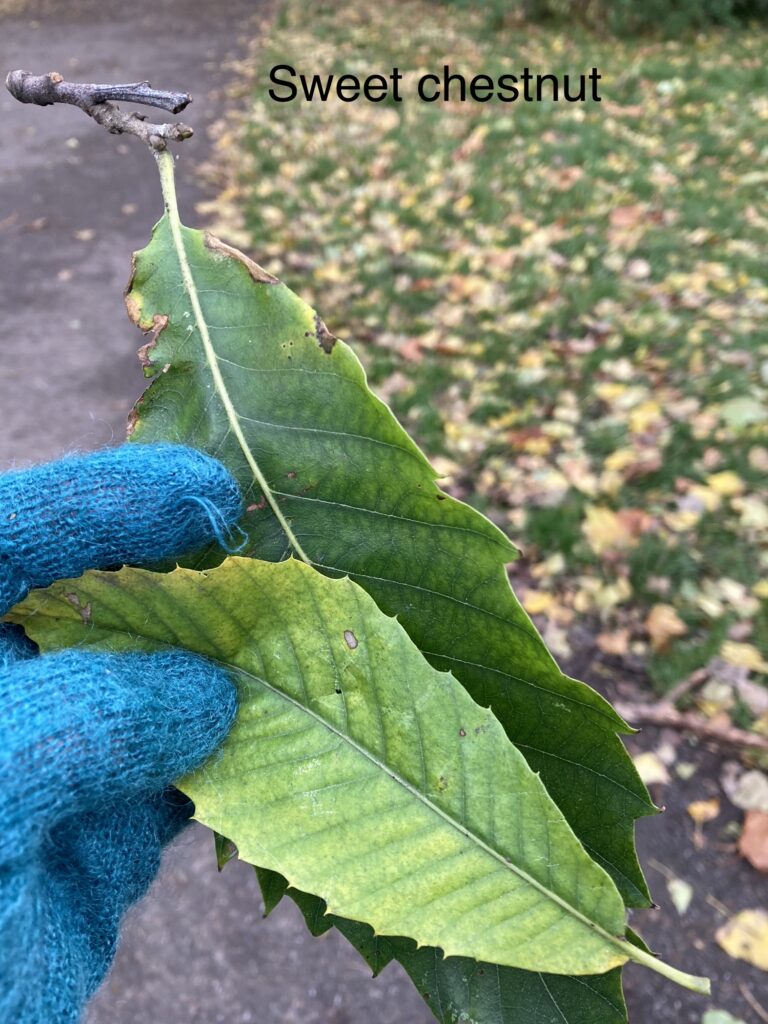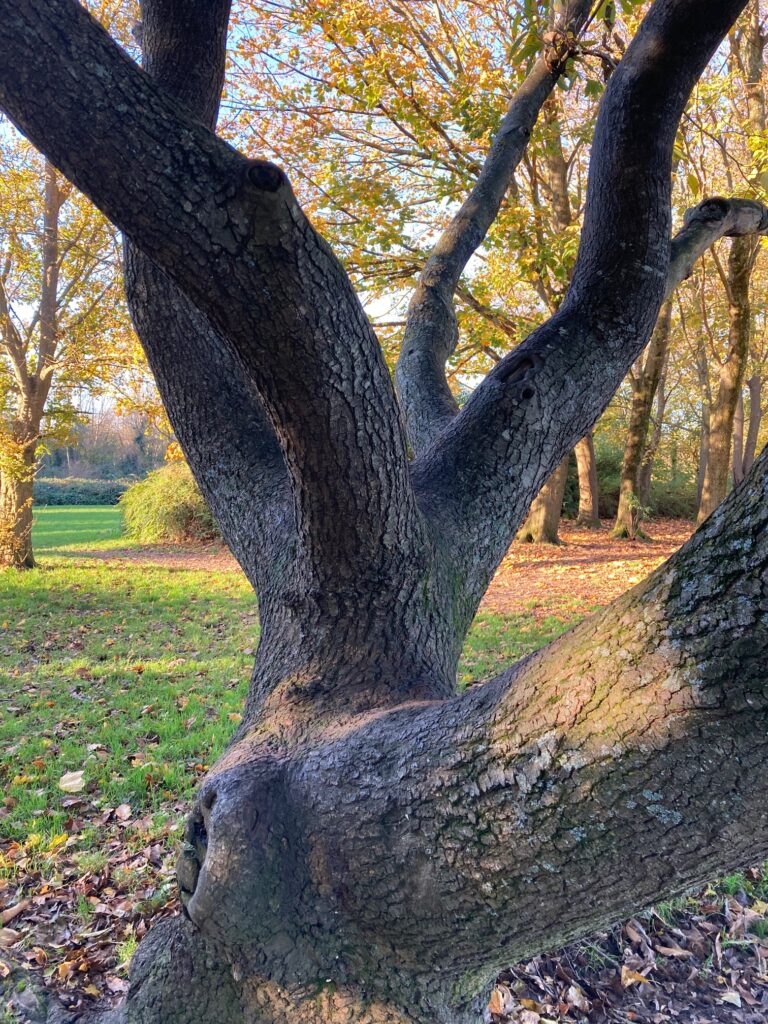What3Words reference: torch.tame.hers
Location notes: in the area of park beyond the inlet on the LHS of the main path – this is a multi-branched tree with branches fairly close to the ground.
Sweet chestnuts are deciduous trees which can have a very long life, up to 700 years, reach 35m and can develop vast girths up to 2m in diameter. The world’s oldest known sweet chestnut grows on Mount Etna in Sicily and is said to be between 2000 and 4000 years old. They belong to the same family as oaks and beeches. Sweet chesnuts are native to southern Europe, western Asia and North Africa and no-one is sure how they came to the UK, science does not support it being the Romans, consequently we do not have much related mythology.
They are distinct from horse chestnuts but the two varieties are located not too far apart in Riverside Park. Horse chesnut leaves are arranged in hand-shapes of 5 or 7 leaflets widening towards the tip and then ending in a point. Sweet chesnut leaves have single leaves which are more even in width and longer (16-28cm long) and narrower (5-9cm wide) and more glossy with more pronounced serrations and about 20 pairs of distinct veins.
The male yellow catkins are long, fragrant but not pendulous, as we tend to think of catkins, and some have a spiky ball as a female flower at the junction with the twig. It is the female flowers which, after pollination, develop into clusters of shiny red-brown fruits wrapped in a green spiky case, looking almost like a fluffy sea urchin. Horse chestnuts spines are much fewer and more coarse. The trees start to bear fruits when mature after about 25 years.
It is a valuable wildlife tree, providing nectar and pollen for bees and other insects, and the nuts are food for squirrels, birds and mice. A large number of micro-moths feed on the leaves and nuts.
The timber is similar to oak, but lighter in weight and easier to work and can be used in carpentry, joinery and furniture. Split coppiced timber is used to make chestnut paling (fencing) as along Manor Farm Road and hop poles. The nuts are edible and a great source of vitamins B and C and minerals and are traditionally roasted at Christmas and used in stuffings, nut roasts and even cake fillings. Romans ground the nuts into a flour or coarse meal.
Sadly a fungal disease, chestnut blight, has arrived in the UK causing bark cancers, dieback and death. Squirrels can also cause much damage.




